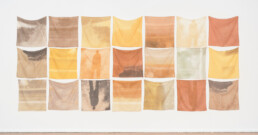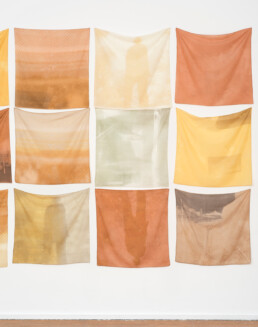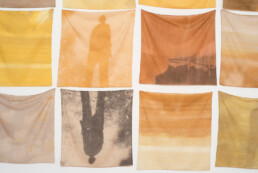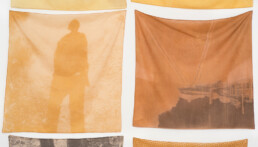LOCAL COLOUR: EXPERIMENTS IN NATURE 28 July — 15 September, 2018UNSW GalleriesCurator: Associate Professor Liz Williamson
Presented by UNSW Galleries, Local Colour: experiments in nature features artists and designers with an interest in sustainable practices, local ecologies and an appreciation for the world’s natural resources.
Participants in this project have a common interest in experimenting with locally sourced plant materials to extract unique colour for artworks created from naturally coloured materials. The exhibition highlights the resurgent international shift towards natural dyes, the increased interest in ‘slow textiles’, the handmade and holistic practice of textile making.
Social, cultural and political issues ranging from climate change, land use, individual and environmental wellbeing are expressed in works coloured by plant dyes and pigments. The dye process requires diverse expertise ranging from growing, identifying, harvesting, collecting, processing, tending and caring for plants. By steeping, printing, dyeing and painting, locally grown or collected plants, barks, leaves, minerals, mud, sands, weeds and waste are used as a source of colour for cloth, fibre, pandanus or paper. Presenting contemporary work by Australian and international artists, designers and social enterprise groups, Local Colour illustrates the vitality, diversity, breadth and beauty of this practice that’s now enjoying a renaissance across the world.
Mayo’s silk scarves are based loosely on the escape maps used by the air force during war time. They reference the constant transit between the two places she now lives. Using incidental snapshots taken in airports and train stations and coloured by plants collected in both cities, this work reflects on how we navigate (or not) a sense of place and local identity in an interconnected yet increasingly fragmented world.




Escape route: Melbourne to Canberra
2018
Silk, cotton, natural dyes including Ulex europaeus (gorse flowers), Maclura pomifera (Osage orange heartwood), Acacia implexa (Lightwood bark), Eucalyptus cinerea (Argyle apple leaves), Eucalyptus ovata (Swamp gum leaves), Cydonia oblonga (Quince leaves), Quercus robur (acorns)
Variable dimensions (each scarf approximately 65 x 65cm)